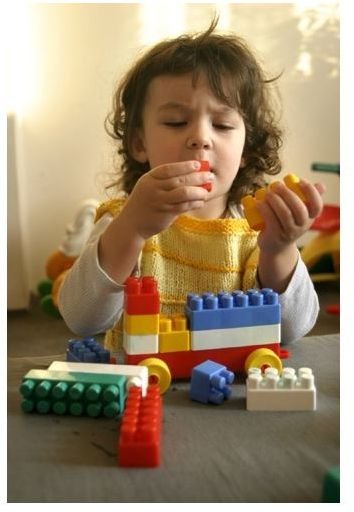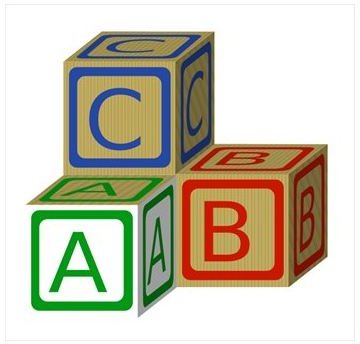Four Preschool Activities for Blocks: Fun and Games
Blocks come in a variety of shapes, colors, and textures so preschool children can use them to learn through their senses. Preschool activities for blocks can also help to develop creativity and problem solving. As you guide the children during block play, talk about the shapes, how blocks are positioned (on top of, underneath, behind), how to balance blocks as in stacking, and counting blocks. Read on for activities that help children explore many concepts in early childhood learning.
Pre-Math Block Play
There are several ways to teach math skills with blocks. Children can categorize them according to shape, size, length, width, and height. Patterns can be made which helps preschoolers understand serial order (first, next, last). In this activity, children learn that blocks can be used as a unit of measure.
You will need a set of blocks all the same size. Challenge the children to use the blocks for measuring their finger by placing small blocks in a row next to the finger. Count the blocks and note this down on paper. For comparison, the teacher can measure her finger as well. Help the children measure their legs, feet, and even the size of toys with blocks. Discuss what you are doing and ask questions like; “What is the longest thing you have measured? The shortest? Other than toys, what else can you measure with blocks?”
Another fun activity is to make a 3-D puzzle with blocks that helps the children understand about shapes and problem solving. Arrange several blocks of different sizes and shapes on a sheet of cardboard. With a pencil or crayon, trace around each block to form an outline of the block’s shape. Remove the blocks and invite the children to put each block back in the correct space. As you place the blocks onto the puzzle, name the shape.
Dramatic Play with Blocks

Dramatic play and creativity go hand in hand when playing with blocks. Challenge the children to become little contractors as they build a city with blocks. Place the blocks on the floor and invite them to build a town. Remember that blocks are open-ended materials and there is no ‘right or wrong’ way to use them. Think about adding props like toy people, cars, trees, etc. to make the town look realistic. Talking about the process while children are playing helps to learn. Making up a story about this town would be fun, so ask plenty of questions to help the children create the scene.
Letter Recognition During Block Play
For this activity alphabet blocks are needed (wooden or plastic). Preschool children are very proud of their names and using alphabet blocks can help teach children the alphabet letters as well as name recognition. Print the child’s name (large letters) on paper and invite her to trace the letters with her finger. Place the alphabet blocks on the table and together pull out the block letters that match the child’s name. Invite her to place the blocks on top of the written letters. Show her how the block letters match the printed letters on the paper.
Make Music With Blocks
Give each child two blocks and ask them how they can make sounds with blocks. Demonstrate how to clap the blocks together to make a sound. Create a pattern of rhythms by clapping the blocks a desired amount of times. Put on some recorded music and use the blocks to clap a beat! For a different sound, tape a piece of sandpaper to one side of each block. Show the children how to rub the blocks together to make sounds.
Preschool activities for blocks are endless as there are many creative ways to build and use blocks in the classroom. Block play is also very developmental as it aids children in both fine and gross motor skill building.
Source: Personal experience
Photo Credits:
